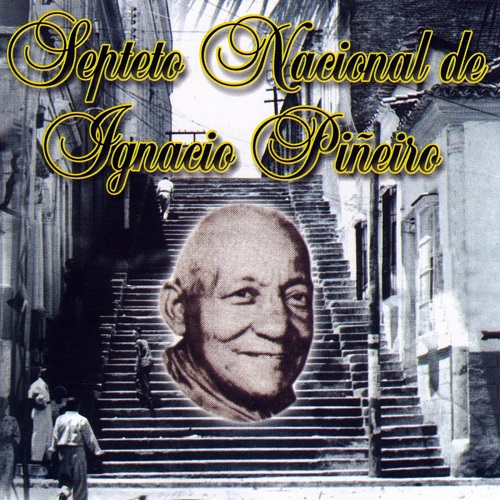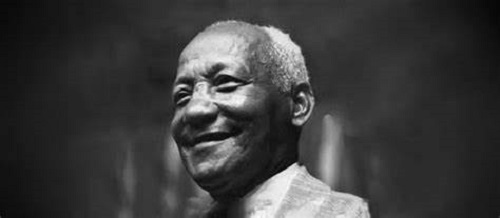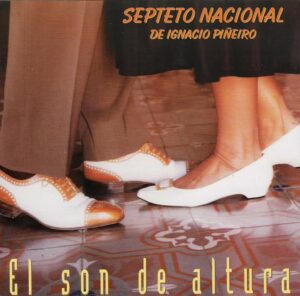North America / USA / New York
The New York International Salsa Congress is New York City’s largest and longest-running Latin dance and music event where the world comes to dance every Labor Day Weekend. This year is the 17th annual edition and will take place at the prestigious New York Marriott Marquis, in the heart of Times Square, footsteps from Broadway theaters, museums and other NYC attractions.

Taking place August 31 – September 4, 2017
Featuring live band concerts, performance showcases, instructional workshops, and non-stop social dancing all in the center of the world’s greatest city, come see why the NYISC brings thousands of attendees from New York and over 40 countries worldwide for an annual celebration of Latin dance, music and culture.
This year, the 2017 NYISC promises to build on this foundation and take it to the next level. Taking place once again in the HEART of Times Square at the extraordinary Marriott Marquis, you will feel that you are dancing in the center of the world. We’ve upgraded to the larger Broadway Ballroom for an even more extraordinary dance experience.

Enjoy workshops and performances from today’s most talented dancers, live music from world-famous bands, and social dancing all night long. All this in the mecca of culture and entertainment, home to countless attractions, parks, museums and shows – join us again for another memorable edition of New York City’s premier latin dance and music event!
Tickets
- Vip Upgrade – $100: (For Full and Evening Pass holders) Upgrade to VIP status! VIP amenities include preferential VIP seating for evening performances, no waiting in line, plus a special VIP commemorative gift, and discounted access to official Congress pre-events.
- Vip Upgrade (1 Night) – $35: (For Full and Evening Pass holders) Upgrade to VIP status for 1 night only! Includes preferential VIP seating for evening performances and no waiting in line.
- Vip Full Passes – $399 + $22.94 Fee: provides access to all Congress workshops, performance showcases, live bands and social dancing for the entire event. (Does not include bootcamp).
Location
The New York Marriott Marquis is the host hotel for the 2017 New York International Salsa Congress, located in the heart of Times Square, at 1535 Broadway, New York, NY (45th Street).

Surround yourself with the sights and sounds of the city at the New York Marriott Marquis. Get relaxed and energized simultaneously as you step into some of the largest guest rooms in NYC, amid the hustle and bustle of famed Broadway. Nestled in the heart of Times Square, this Broadway hotel gives you easy access to exciting shows, Fifth Avenue shopping, Radio City Music Hall, Rockefeller Center, Central Park, Lincoln Center and Madison Square Garden.

The New York Marriott Marquis puts you in the midst of popular NYC attractions or near several subway lines to access any part of NYC.
Dance Instructors
Today’s most talented, creative, and popular dance instructors to bring their skills and technique to the next level. They are offering a number of workshops over the course of the weekend for beginners to gain confidence and for advanced dancers to enhance their repertoire.
Antonio Doza (Doza Dance Company, New York):
He is dancer, Actor, Model, Health & Fitness Advisor, Founder and Owner of Doza Dance Company from New York City. Known for his great performance presence, Antonio brings so much heat to the stage that he guarantees all eyes are on him.

As an instructor, he brings his intriguing style with his amazing Spinning, Isolation, Body Movement, Styling, Lead and Following, and Technique to his workshops and classes. He is featured in the salsa documentary La Epoca Pt.2 and is featured in various music videos by many top name commercial artists.
Antonio has traveled throughout the world teaching and showing off his talents. Antonio began dancing at the age of three. After many years of studying hip-hop and modern he took an interest in dancing Salsa. In 2008, he trained with the world renown, Clavekazi Dance Company, directed by Shaka Brown. He is currently touring, advising for Visalus, directing his dance company & acting.
Anya Katsevman (New York):
Born in Kiev, Ukraine, Anya Katsevman has been living in the United States since 1993. She began her dance training at the age of ten. After watching her brother become National Champion, Anya developed her own competitive drive that hasn’t stopped since.

She has won over 20 prestigious world titles in the international Latin dance arena, including Eastern United States Championships, Ohio Star Ball, La Classique Du Quebec, American Star Ball and the United States Open Championships. She has also starred in touring shows Burn the Floor and Dancing with The Stars. Anya also took part in numerous television productions including Sabado Gigante, Good morning America and multiple programming on Univision.
Anya has also danced for many latin artists such as El Gran Combo and Gilberto Santa Rosa. Often referred to as the future of salsa, Anya’s combined background of training, dynamic stage presence, elegance, graceful style, feminine approach, and strong technical action Anya quickly became one of the most sought after Latin dancers in the world. Currently, specialize in teaching all levels, coaching competitors and current champions and adjudicating competitions worldwide.
Delille “Mambo D” Thomas (New York):
Delille Thomas, also known as “Mambo D”, is one of the world’s most creative and dynamic Latin dance performers and instructors, internationally recognized for his pure style and virtuosity.

His dance background includes extensive training in Jazz, Modern, Hustle and Latin (Afro, Mambo, Cha-Cha, Tango) and various Caribbean and street dances. Since October 1992, Mr. Thomas has been teaching Mambo classes and conducting special workshops in New York City and various parts of United States and the world.
Ernesto And Denisse (Florida/New York):
Ernesto ‘El Watusi’ Bulnes was born in Honduras and raised in Miami, Florida, the city where he discovered his passion for dance. His initiation into Salsa began with training under the Mayan International Champion, Danny Bravo, an instructor who inspired Ernesto’s distinct dancing style.
Through training across various dance disciplines, he has developed his own style, a fusion of various arts and techniques that make him a distinct member to any dance floor.

After years of training, in 2011 Ernesto founded his own school, Potencia Latina Dance. Born in Miami with an Argentinean heritage, Denisse Cambria has accomplished many of her life goals starting with becoming one of the most well-known and recognized “Salsa” dancers in Florida, USA.
She has taught and performed with many top dance companies including Shaka Brown, Jayson Molina, Al “Liquidsilver”, Casa Salsa Dance Studio, Salsa Lovers Dance Studio, Project Generation, Energy One, Salsa Heatwave and Salsa Mia. She also competed at the ESPN World Salsa Championships with her partner Alfredo DiNatale.
After a total of 10 years of dancing salsa, she continues to enrich her craft with her partner Ernesto Bulnes and the New York Movement Competition team who are the new Professional Large Team WSS World Salsa Champions of 2016.
Lorenz Latin Dancers (New York):
The Lorenz Latin Dance Studios, With Four Locations In Nyc, Is A Complete Dance Academy Dedicated To Providing You With Professional Dance Instruction. We Offer Classes At All Levels, For Children, Teens And Adults, As Well As Choreography, Private Lessons, And Entertainment. Whether You Are An Experienced Dancer, Or Have Never Stepped Out On A Dance Floor,

We Have A Class That Suits Your Needs. Learn To Dance Salsa, Bachata, Cha Cha, Merengue, Hustle, Tango Or Ballroom, With Our Experienced And Dedicated Instructors. They Have Locations In Glendale Queens, Corona Queens, The Bronx And Manhattan. Their Website Is Lorenzdancestudio.com
Among much other artists…
DJ’s
Their passion is bringing you the music that fills your soul and keeps you dancing the night away. They spin at the most popular socials, clubs and events where the serious dancers come together. Meet the best Salsa DJ’s in the world – They are 11 and you will be with them in the New York International Salsa Congress.
Dj Frankie Flores (Cleveland):
DJ Efrain “Frankie” Flores is The Main Resident DJ for the Renowned Baila Duro socials and festivals in Cleveland, OH and is working actively at keeping Classic Hard and Rare Salsa alive. He ignited his passion for music when he first started spinning house music in the basements of warehouses in Cleveland during the early 90s.

Dj Gonzo (Texas):
The musician, producer and DJ was born and raised in El Callao, Peru. At the age of 17, he moved to New York City. He studied music at Queens College music school and learned Latin percussion at Boys Harbor Conservatory for the Performing Arts located in El Barrio, NYC.

His musical studies helped him develop an eclectic taste, and led him to the authentic salsa vieja sound for which he is known. DJ Gonzo’s unique style and soundly rich music selection has made him one of the most influential and top salsa DJs in the U.S. In September 2014, DJ Gonzo launched DJ Gonzo Productions, and signed salsa legend piano virtuoso, Mr. Alfredito Linares.
DJ Gonzo productions’ first album was released the first week of November 2014. The album “DJ Gonzo presents Alfredito Linares – Salsa Pa Todo El Mundo” includes 10 dance floor killer tracks and is now a favorite by salsa DJs world-wide.
Dj Mike Calderon (Miami):
Mike Calderon is a native born and raised in the Magic City of Miami with descendents from Quito, Ecuador. At 21, he started taking Casino salsa lessons and that is where his journey to become a very popular local DJ began. Mastering Casino, he took his dancing to the next level with LA Style and On2 on his own with no classes, just by being in the socials and with other dancers.





















